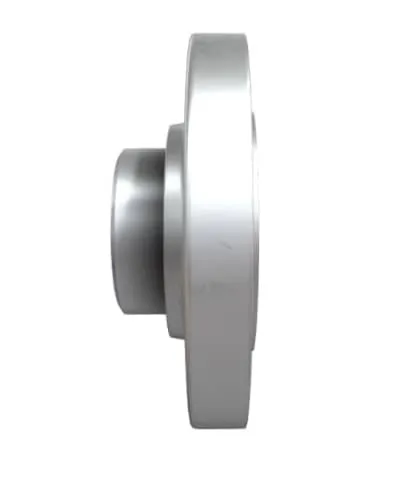-
Cangzhou Yulong Steel Co., Ltd.
-
Phone:
+86 13303177267 -
Email:
admin@ylsteelfittings.com
- English
- Arabic
- Italian
- Spanish
- Portuguese
- German
- kazakh
- Persian
- Greek
- French
- Russian
- Polish
- Thai
- Indonesian
- Vietnamese
- Zulu
- Korean
- Uzbek
- Hindi
- Serbian
- Malay
- Ukrainian
- Gujarati
- Haitian Creole
- hausa
- hawaiian
- Hebrew
- Miao
- Hungarian
- Icelandic
- igbo
- irish
- Japanese
- Javanese
- Kannada
- Khmer
- Rwandese
- Afrikaans
- Albanian
- Amharic
- Armenian
- Azerbaijani
- Basque
- Belarusian
- Bengali
- Bosnian
- Bulgarian
- Catalan
- Cebuano
- China
- China (Taiwan)
- Corsican
- Croatian
- Czech
- Danish
- Esperanto
- Estonian
- Finnish
- Frisian
- Galician
- Georgian
- Kurdish
- Kyrgyz
- Lao
- Latin
- Latvian
- Lithuanian
- Luxembourgish
- Macedonian
- Malgashi
- Malayalam
- Maltese
- Maori
- Marathi
- Mongolian
- Myanmar
- Nepali
- Norwegian
- Norwegian
- Occitan
- Pashto
- Dutch
- Punjabi
- Romanian
- Samoan
- Scottish Gaelic
- Sesotho
- Shona
- Sindhi
- Sinhala
- Slovak
- Slovenian
- Somali
- Sundanese
- Swahili
- Swedish
- Tagalog
- Tajik
- Tamil
- Tatar
- Telugu
- Turkish
- Turkmen
- Urdu
- Uighur
- Welsh
- Bantu
- Yiddish
- Yoruba

Dec . 28, 2024 05:10 Back to list
en 1092 1 type 11
Understanding EN 1092-1 A Guide to Flange Standards
Flanges play a crucial role in piping systems, providing the necessary connection points for different segments. Among the various standards that govern flange specifications, the European standard EN 1092-1 is one of the most widely recognized and utilized. This article aims to explore the significance, classifications, and applications of EN 1092-1, shedding light on its importance in engineering and industrial settings.
EN 1092-1 is part of a broader set of standards established by the European Committee for Standardization (CEN) that specifies the dimensions, tolerances, and materials for flanges. Specifically, this standard pertains to circular steel flanges for pipes and provides a clear framework for how these essential components should be manufactured and installed. The uniformity introduced by EN 1092-1 ensures interoperability between different systems and manufacturers, promoting safety and efficiency in construction and industrial operations.
One of the key features of EN 1092-1 is its classification of flanges into various types. The standard outlines different pressure ratings, from PN2.5 up to PN400. Each rating corresponds to specific working pressures and temperatures, indicating the strength and durability required for particular applications. The pressure nominal (PN) designation is critical as it helps engineers and designers select the appropriate flange for a given project, ensuring that safety considerations are prioritized.
en 1092 1 type 11

Moreover, the standard categorizes flanges based on their face types. There are several face types mentioned in EN 1092-1, including flat, raised, and ring-type joints. Each type has distinct characteristics that make them suitable for particular piping configurations and operational environments. For instance, raised face flanges are widely used because they provide a better sealing surface, minimizing the risk of leaks when properly installed.
Material specifications are another vital aspect of EN 1092-1. The standard prescribes various materials for the fabrication of flanges, such as carbon steel, stainless steel, and alloy steels, each selected based on their intended application and environmental conditions. Engineers must consider factors like corrosion resistance, temperature stability, and mechanical properties when choosing materials according to this standard.
The impact of EN 1092-1 extends beyond merely providing specifications. By standardizing flange dimensions and characteristics, this standard fosters greater safety throughout the industry. It minimizes discrepancies that can arise from varying flange sizes or definitions, reducing the potential for accidents due to misfits or failures in piping systems. Overall, adherence to EN 1092-1 can significantly enhance the reliability and longevity of interconnected systems in various applications, from oil and gas pipelines to water treatment facilities.
In conclusion, the EN 1092-1 standard is integral to modern engineering practices related to piping systems. Its detailed specifications regarding flange dimensions, materials, and classifications ensure that systems are robust, safe, and efficient. By following this standard, engineers and manufacturers can avoid costly errors, enhance operational safety, and ultimately contribute to the overall efficiency of industrial processes. As industries continue to evolve and demand higher standards, EN 1092-1 remains a cornerstone of flange design and implementation, reinforcing the importance of adhering to established guidelines for safety and performance.
Latest news
-
ANSI 150P SS304 SO FLANGE
NewsFeb.14,2025
-
ASTM A333GR6 STEEL PIPE
NewsJan.20,2025
-
ANSI B16.5 WELDING NECK FLANGE
NewsJan.15,2026
-
ANSI B16.5 SLIP-ON FLANGE
NewsApr.19,2024
-
SABS 1123 FLANGE
NewsJan.15,2025
-
DIN86044 PLATE FLANGE
NewsApr.19,2024
-
DIN2527 BLIND FLANGE
NewsApr.12,2024
-
JIS B2311 Butt-Welding Fittings LR/SR 45°/90° /180°Seamless/Weld
NewsApr.23,2024











